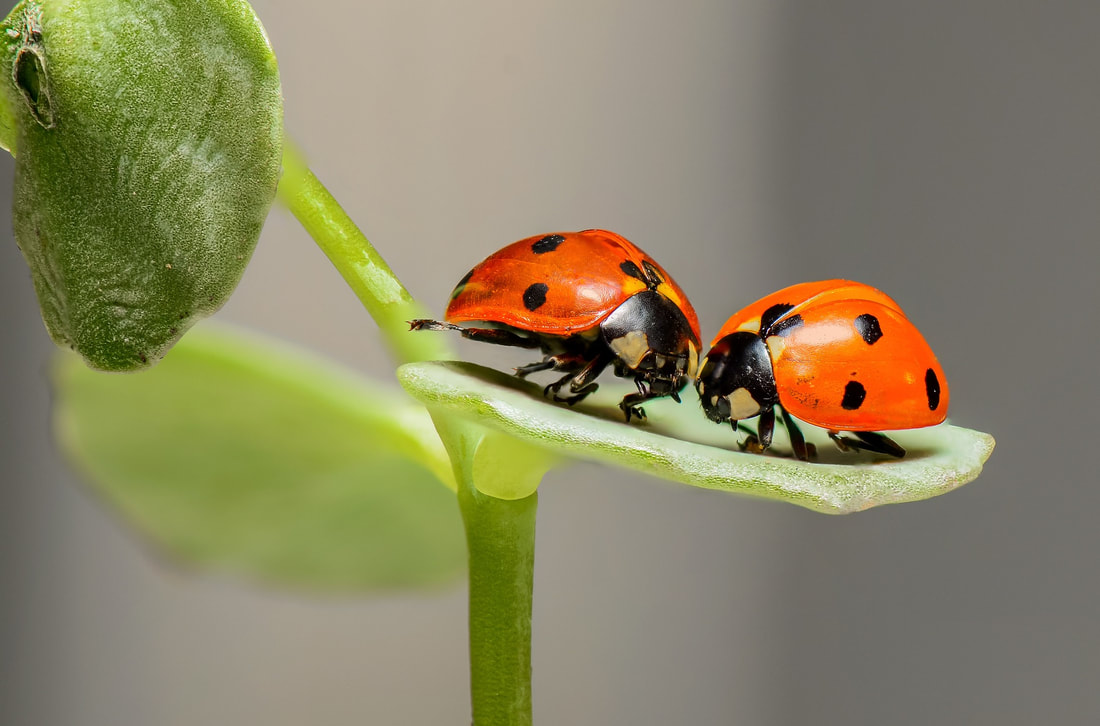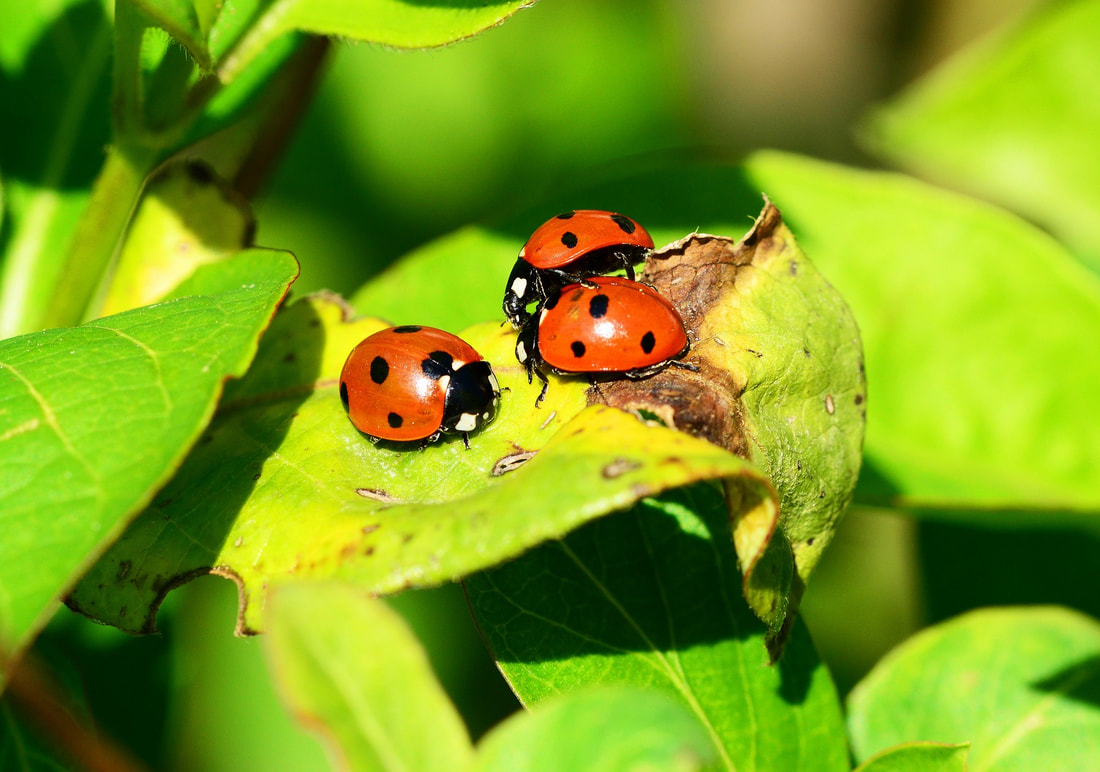|
Photo: Pixabay Ladybugs are hard-working additions that most gardeners and farmers welcome for their ferocious appetite for eating insects that feed on plants and the beneficial role they play within our eco-system. There are nearly 6000 species worldwide, the majority of which are native. Big ProblemSadly, like bees, these cute little critters are in decline and are being threatened with extinction due to habitat loss, GMO preferences and environmental changes, as well as, increased usage of chemical pesticides and the introduction of single-crop farming. Scientists are seriously worried about what their dwindling numbers could mean to agriculture. Called Ladybird or Ladybug, depending on which part of the world you live, these vibrant colored insects are neither bird nor bug, they are in-fact, a flying beetle. Their size is smaller than a paperclip and yet in their life cycle, which is 2-3 years, they can eat up-to 5000 aphids and other soft bodied plant parasitical insects and their unhatched eggs. Unlike bees, they are not colony insects and prefer instead a more independent style of living. This doesn’t appear to be a disadvantage for the species in terms of predators, as their vibrant color and distinctive patterns serve as a warning and when faced with danger, the Ladybug merely plays dead and secretes a foul-tasting fluid from the joints in its legs. The reproductive cycle is a six step courtship by the male, when aroused by the pheromones secreted by the female. Once fertilization has occurred, the female will lay her eggs, laying hundreds at once, and move on. Strategically, she will lay her eggs in the very colony that they will feed from once hatched. So it seems as if there is no need of nurture from egg laying through the month long cycle of larvae, pupae and hatching, for as soon as they have hatched there is an immediate source of food. It really is just a cycle of birth, feeding, procreation and death with no social activities in between. There is a species to be wary of. Introduced to North America in 1916, the Asian Lady Beetle originated from hotter climes and during the harsh winters in the USA started invading homes, en masse, searching for warmth. Almost identical to the native species, the Asian variety can be identified by the ‘M’ shaped marking on the back of its head and secretes a foul smelling, yellowish liquid. Although still an insatiable eater of insects, this species can be quite aggressive in nature, biting both animals and humans and, is becoming a cause of concern for the wine industry as their pungent and noxious odor has been known to taint the grapes and the flavor of the wine. So what can we do to help protect our little native red friends to aid in their benefit to this planet? As well as being more aware in our farming and gardening practices we could create our own colony to be released in our gardens. In a matter of weeks or months, as long as we have created the right conditions, the possibility of releasing new hatchlings is very favorable. To do this, all that is required is: 1. The container. A wooden box or an empty fish tank with plenty of room and sealable to prevent escapes. 2. Collect ladybugs from your garden, bearing in mind that here is no way to tell the male from female. 3. Add fresh leaves and twigs to your box container. Try and find stems with aphids attached. 4. Fruit is a good additional source of food. Soak some raisins in water and add them to the container 5. Using a dropper, drip water on the leaves and twigs, but avoid making puddles, another good way to provide water is by misting the container. 6. Gently place the ladybugs into the container. 7. Give the ladybugs fresh food and water daily. 8. Add new leaves to the ladybug habitat as needed. 9. When they have done what comes naturally and increased their little habitat you can release them back into the wilderness. Releasing them around some green stemmed plants is the best idea so they can fly away and find a new home.
0 Comments
Leave a Reply. |
AuthorArchives
November 2022
CategoriesVisit our other BLOGS!
|
|



 RSS Feed
RSS Feed




